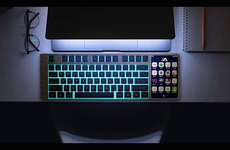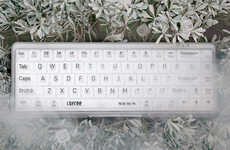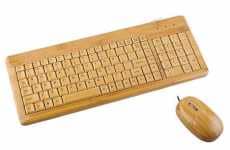
The No-Key Keyboard
References: yankodesign
Keyboards with actual keys are so last decade. All the hip gadgets have already eliminated physical keys (iPhone, Surface...), and even upcoming notebooks seem to be over the keys.
Designer Kong Fanwen brings the same keyless concept into external keyboards with the “No-key Keyboardâ€, a flat full size QWERTY keyboard that features a glass surface, camera and embedded lighting (can we say, action!) The keyboard design utilizes motion capture technology to follow your finger movements and translate them into input.
I guess we have to come up with a new name for the keyboard if it doesn't have keys anymore.
Check out two upcoming keyless laptop designs:
Designer Kong Fanwen brings the same keyless concept into external keyboards with the “No-key Keyboardâ€, a flat full size QWERTY keyboard that features a glass surface, camera and embedded lighting (can we say, action!) The keyboard design utilizes motion capture technology to follow your finger movements and translate them into input.
I guess we have to come up with a new name for the keyboard if it doesn't have keys anymore.
Check out two upcoming keyless laptop designs:
Trend Themes
1. Keyless Keyboards - There is an opportunity to revolutionize the way we input text and interact with electronic devices by eliminating physical keys and using alternative input methods such as motion capture technology and touchscreens.
2. Gesture-based Technology - Developing gesture-based technology that can accurately interpret and translate finger movements into input could have numerous applications beyond keyboards, such as gaming, virtual reality and human-computer interaction.
3. Transparent Surfaces - The concept of embedding technology into transparent surfaces such as glass presents an opportunity to create innovative products in various industries, including automotive, aerospace and interior design.
Industry Implications
1. Computer Hardware - As more devices move away from traditional keyboards, there is an opportunity for computer hardware manufacturers to develop alternative input methods that are intuitive, practical and reliable.
2. Consumer Electronics - With the proliferation of smart devices, there is an opportunity for consumer electronics manufacturers to incorporate gesture-based technology and transparent surfaces into their products to enhance user experience and differentiate their offerings.
3. Automotive - Incorporating transparent surfaces and gesture-based technology into the design of interior and exterior components such as windows, dashboards and steering wheels could have safety and aesthetic benefits for the automotive industry.
5
Score
Popularity
Activity
Freshness























